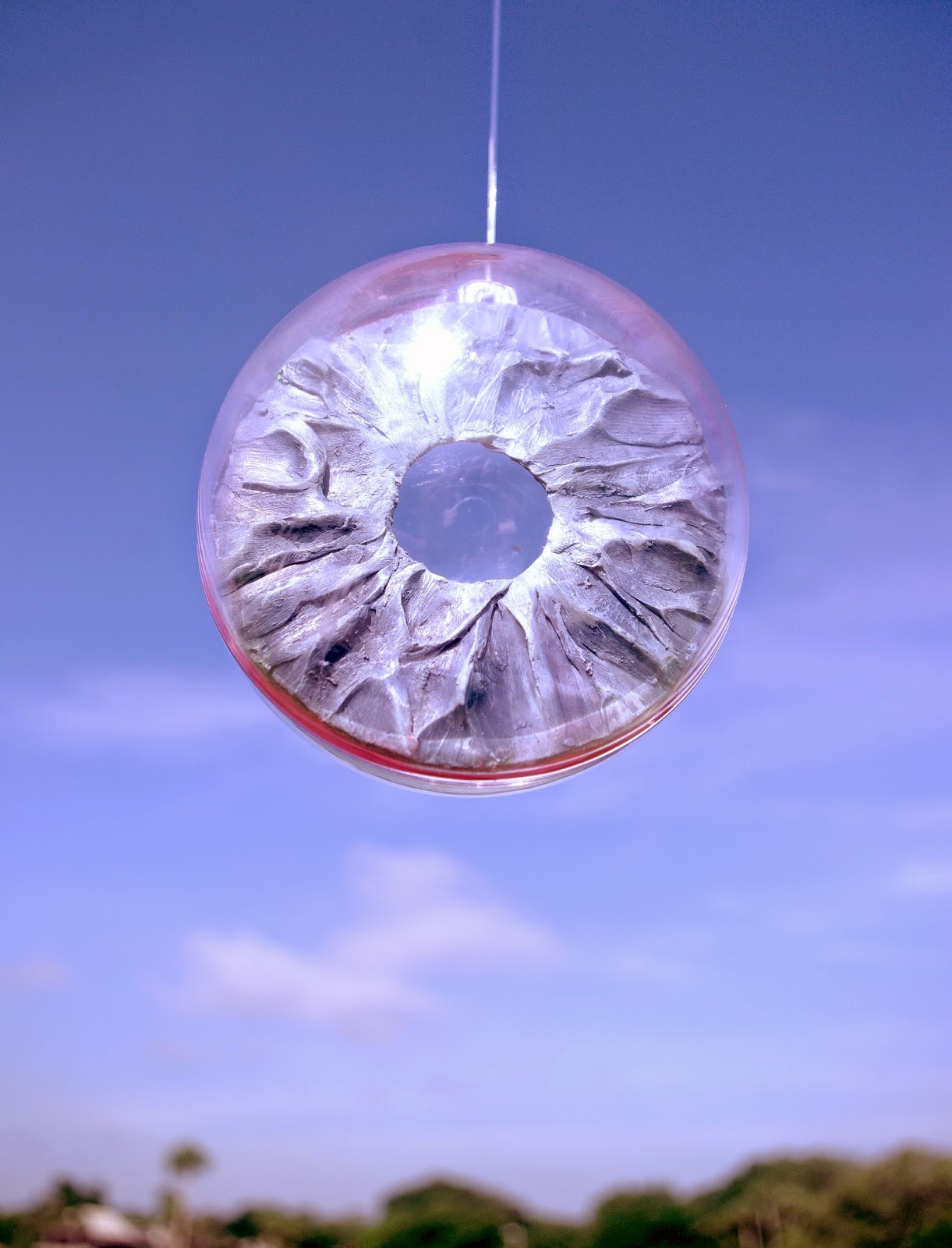Monday, May 12, 2014
Glass Science Dome Work & Statement
As you can see, I had several very different ideas for this piece initially. I was most fascinated by the image of the human eye, and the idea that I ran with was to build a vaguely anatomical model of an eyeball within the glass dome. I first established, even before I was entirely sure about what I wanted to do with it, that I didn't want to use the round fishbowl glass, so I ordered a small bell jar/cloche instead. The idea, once it was better formed, was to use the curved end of the bell jar to represent the lens of the eye, and in the cylindrical portion, to represent the nerves and veins that appear in the back of the eyeball. I crafted an iris from cardboard and painted sculpey, and conveniently, the end of the bell jar distorted it in such a way that it looked less like a mildly topographic disc of cardboard and much more like the subtly reflective human iris. Unfortunately, I had a lot of logistic trouble trying to create the back of the eye. I didn't want to use sculpey for this because I didn't want it to be opaque; I wanted you to be able to see through the sides of the glass to what was happening in the centre. Ultimately, I decided that the part of the eye that I was most interested in anyway was really the iris. I love the topography and the interplay of colour and depth of the human iris. I decided instead to minimize the piece to focus just on the iris and the lens. The bell jar was not ideal for this because the cylindrical portion of it would then have been empty, and the piece would lose strength. Instead, I got some spherical plastic ornament halves and crafted iris discs that would fit at their centres, painting the back of each disc the hue of the muscle or tissue that's directly behind the iris as shown in the anatomical models in my research. The small ornaments have the same lens distortion effect as the larger bell jar, but I think they are more successful because they are simpler. Instead of making one large model, I instead painted six irises in different colours representative of the variations in eye colour: Blue, brown, hazel, green, grey, and periwinkle. For the end of class critique, I hung them from the ceiling in a small alcove, at different heights but along the same plane (because they were hanging from a pipe), although ideally, I would like them to be either in more of an array, or at eye level, or both. I left the centres of the irises, where the pupil would be, open, so that the viewer could look directly through them, and while the textures of the irises are really the most interesting quality of the piece, I think there is something about the environment in which they are displayed and what you might be able to see through them. For my photos, I chose to take the eyes outside to capture a more engaging background/environment. The organic quality of the subject matter also seemed to beg for a natural setting.
Subscribe to:
Post Comments (Atom)













No comments:
Post a Comment